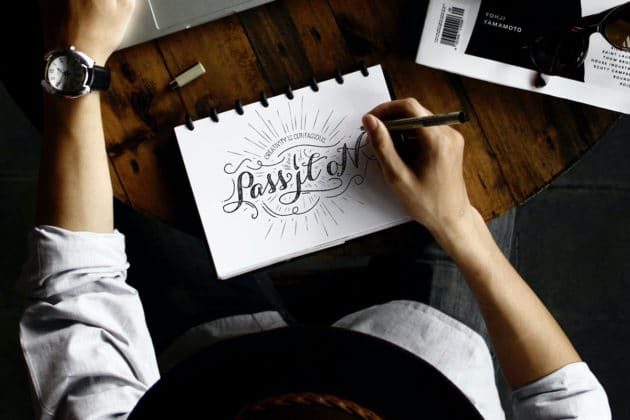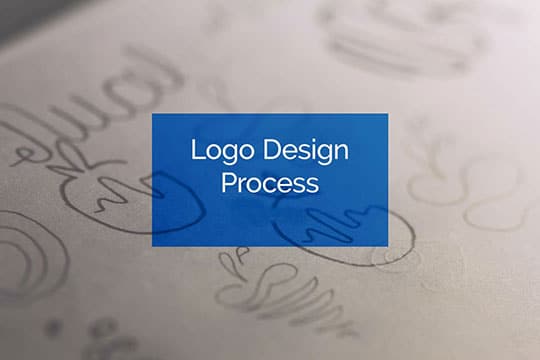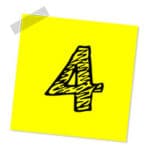Let’s talk about logos. Every company has one and the most successful companies have memorable ones that let their brand stand out. A few have even gone on to define brands for generations. Needless to say, having a good logo could be just the thing to help your eCommerce business soar above the competition.
So, how do you go about creating a good eCommerce logo? The following offers a detailed rundown of what makes a logo memorable, how it helps your business, and what it takes to create one. We’ll also introduce a few convenient tools you can use to quickly and effectively create your eCommerce logo.
What is a Logo and Why it’s Important?

In its essence, a logo is a combination of visual elements and/or text meant to identify and represent a particular brand. A logo is more than just a collection of words, shapes, and symbols, however. It’s also a way for people to not only identify brands at first glance but also remember them long after the sale.
Many of the best logos take only split seconds to recognize. Take the McDonald’s logo, for instance. Nearly everyone around the globe knows those Golden Arches when they see them. The same goes for the famous Nike swoosh, the iconic IBM logo, and many others.
A logo can also tell customers at first glance what the brand is all about and what to expect at the onset of their customer experience. Great logos are also the perfect vehicle for communicating your company’s values. But most importantly, your logo helps your business stand apart from others, especially when your eCommerce business serves a hotly-contested market.
Recommended for you: Logo Design Trends in 2022: An In-Depth Breakdown.
Characteristics of a Good Logo

It’s hard to create a good logo without knowing what actually makes a good logo design in the first place. Here are a few positive traits that you’ll want to see in your next eCommerce logo:
- Simple: An overly-complicated logo design can leave customers scratching their heads. That is if they bother to remember your logo in the first place. A simple, evergreen design not only makes your logo easy to remember but also easier to print and display on other media.
- Scalable: Your eCommerce website isn’t the only place your logo will end up. You’ll want your logo to look just as good on paper at 300 dpi as it does on screen. Your logo should also work regardless of whether it’s displayed in full color or in black and white.
- Memorable: The best logos in the business were designed from the start to stand the test of time. Consider how long the Coca-Cola logo’s been in use with only minor tweaks.
- Suitable: You’ll also want a logo that’s appropriate for your eCommerce business. A flashy logo might not fly in a comparatively muted corporate firm, whereas a more restrained logo with neutral colors might not work in a fun, colorful setting.
- Unique: Imitation is flattery, but you won’t get accolades for directly copying an existing logo. Aside from the trademark and copyright issues, copying an existing design guarantees your eCommerce logo gets lost in a sea of other, similar logos. That’s no good if you want your business to stand out completely. For further proof, consider the controversy surrounding the logo for Capcom’s “Street Fighter 6” game and how it’s nearly a carbon copy of several other existing logos.
What to Consider When Designing Your Logo?

Type of Logo

The overwhelming majority of logos currently in use are type-based, graphical, or a combination of the two. Which one best fits your brand depends on a broad range of factors, including the products and services being offered and the vision for your eCommerce brand.
Type-based logos rely heavily on fonts or a highly-stylized design that’s still interpreted as text. The IBM trademark is one example of a text-based logo that’s fairly stylized for its usage. The Google logo is another example that almost borders on being a symbol rather than a text-based logo. Most text-based logos are kept short to prevent visual clutter and speed up the logo creation process.
Graphical logos do away with text in order to boil the brand down to its most basic essence. To wit, witness the Apple computer brand logo’s transformation from an overly elaborate affair to the simple and to-the-point “bitten apple” logo that remains the brand’s iconic calling card. Some graphical logos use abstract shapes to convey brand identity while others enlist company characters and mascots. A clear example of this involves KFC and its simplified rendition of Colonel Sanders’ likeness.
Some logos combine both graphics and type to create one-of-a-kind logos that are easy to recognize. Universities, fast food joints, and auto manufacturers are just a few that use a combination of text and graphics to create a cohesive and memorable logo.
Colors

We live in a colorful environment without realizing how much color affects us on a deep, psychological level. Color psychology, pioneered by the likes of Johann Wolfgang von Goethe and Carl Jung, remains an important aspect of logo design.
So, how does color psychology play a role in logo design? Think about how you feel when you see certain colors throughout the day. Different colors and color combinations can invoke emotions that customers go on to associate with the brand in question.
Red invokes passion and strong emotions while orange gives off an energetic, athletic vibe. Yellow looks and feels friendly and approachable to most people. Blue is a soothing color that also invokes maturity, stability, and reliability. Green is easy on the eyes and thus is commonly used to help customers relax.
Certain colors can also denote a high-end or discount product or service. For example, most luxury goods providers use black to invoke a sense of exclusivity and sophistication. Meanwhile, white is a universal color that can be used for both high-end goods as well as affordable discount goods.
You may like: 8 Tools to Ease the Logo Design Process for your Business.
Symbols

Symbols and shapes may seem like such a rudimentary aspect of logo creation, but it’s just as important as color. Certain shapes can also have a psychological effect on customers that view them. For instance, circles are a popular way of invoking time and continuity, while rectangles and squares invoke a sense of stability and reliability.
The use of arrows not only draws customers’ focus towards your logo but also makes the logos themselves look and feel more dynamic. You can also combine arrows with a call to action for a bigger bang for your conversion buck.
Font

The fonts you use for your logo can make or break an otherwise great design. For instance, serif fonts can give your logo a serious, grounded feel. Whereas sans-serif fonts are a bit more informal, but without being too playful in most cases.
Handwritten fonts are prized for their friendly, close-knit feel – a boon for eCommerce businesses seeking a more personal connection with their customers. Certain decorative fonts add a fun, playful feel to a logo.
Design Process

Great logos don’t just spring into existence fully formed. Behind every logo is a design process that ensures the best ideas are chosen and brought to life by seasoned professionals. Creating a high-quality logo involves:
- Analysis: Studying the company itself, including its values, goals, current clientele, and target audience.
- Research: Studying the competition and benchmarking their approaches toward logo design.
- Brainstorming: Coming up with ideas for logos while keeping the client’s ethos and design parameters in mind.
- Concepts: Creating dozens or even hundreds of concepts, each with different color, font, and symbol combinations, for eventual selection by the client.
- Feedback: Getting the audience’s reaction to the finalized designs and making adjustments based on said feedback.
Logo Maker Tools to Use

Just because you need a great eCommerce logo doesn’t mean you have to spend big money on a seasoned designer. Online logo generators are a great alternative for firms that have big ideas but are short on cash and time. These tools use the latest in AI technology to create a wide variety of custom logo designs, which you can then tweak to your heart’s content using the built-in editing tools.
While the options mentioned below pale in comparison to what a design agency or even a freelancer can offer, a logo maker could be just the thing to help launch your fledgling eCommerce business.
1. Tailor Brands Logo Maker

Tailor Brands Logo Maker is one of the top logo generators on our list. It’s relatively easy to use and offers a wide range of fonts, images, and color customization options. The logo maker starts off by asking a few simple questions before generating several logos for you to choose from.
There’s more to Tailor Brands Logo Maker than just logo creation, however. The website also lets you build an online presence for your business and even walks you through the steps of trademarking your logo design.
2. Logo Makr

Logo Makr is another option for those who need a great eCommerce logo but lack the time and the tools to make that happen. The website offers both free and paid options, with the latter giving you complete ownership and copyright of your logo, access to high-resolution and vector format files, and more.
Logo Makr lets you search through a large gallery featuring over 3 million distinct graphics. You can choose one that you feel represents your brand best, make a few tweaks and add text as needed before saving your design. There’s also a custom shape style tool that lets you take control of a simple shape and turn it into any custom shape you so desire.
3. Fiverr Logo Maker

The same website that connects you with millions of freelancers also has its own logo maker. If you want to try your hand at making a professional logo, the Fiverr Logo Maker makes that easy with its simple interface and multitude of template-based logos.
You start out by answering a few basic questions about your business. When you’re done, the logo maker uses its AI technology to generate a logo template based on your previous feedback. The editing tools are a bit more limited than what you’d expect. But, you can still create a killer eCommerce logo in a pinch.
4. Adobe Express logo maker

This one is an advanced AI-driven tool you are getting from the reputed house of Adobe. The Adobe Express logo maker has a free plan that you can use in an unlimited number of projects to generate visually appealing eCommerce logos.
They have a vast library of pre-designed logo templates. Choose any of their available templates, customize it using their freely available fonts, icons and images and download it for your use. It’s as simple as that. You can even create animated logos using Adobe Express logo maker.
The free plan comes with 2 GB of storage and plenty of free icons, images, fonts, and templates that is sufficient for most users. More advanced users can take the premium plan of Adobe Express logo maker at $9.99/month (or $99.99/year) to get access to the premium template libraries, licensed fonts, and graphics to up their creativity to the next level.
You may also like: Ready to Redesign Your Logo? Here’s How Big Brands Did It.
Final Words

No one said creating an eCommerce logo was easy. But, the above tips and resources should make that task much easier. While you always have the option to hire a professional, today’s logo generators make it a breeze to create high-quality logos in less time and with less effort.





